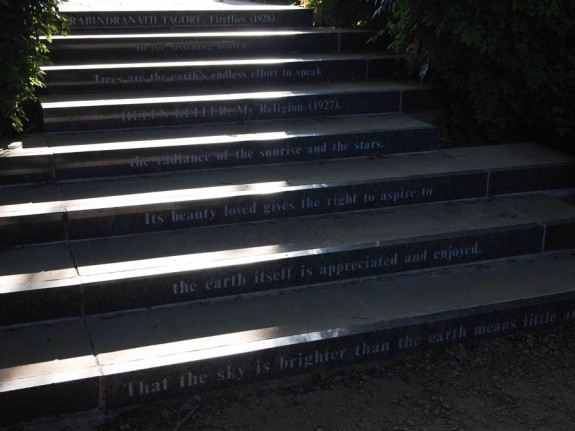In a blog post dated April 2013, about a month before his New York Times bestseller The Fifth Wave hit shelves, Rick Yancey listed four reasons not to be a writer. His second was “Failure is guaranteed.” Here’s what he had to say:
“You have to come to terms with your own loser-ness. I do this by looking at myself in the mirror and saying, “You’re pathetic.” I don’t know why it helps, but it does.”
…
Oh, and happy Friday everyone!
This is a cheerful post. Actually, it is. One of the biggest steps a writer makes in his journey is the realization that he is not, in fact, Hemingway on the first draft. I suppose there are people out there who write perfect books on the first try, but I do not know them and am not sure I want to. For the rest of us, there’s structure.
In my last post, I gave three reasons why I think writers ought to use an outline. Will it work for everyone? Of course not! If there was one way to write well, we’d all be successful, and DIY MFA would have no reason for existence. This is just one method. But I think it’s a good one. And it works for a lot of writers. If you’re stuck, just starting out, or just looking for fresh inspiration, this might be a place to start.
Before we dive in, let’s list a few things an outline is not.
- An outline is not your story — a lot can and probably will change between a preliminary outline and a final draft
- An outline is not not your story — it doesn’t work if you don’t try to stick to it. Then you might as well not write one at all.
- An outline is not your enemy — it will not destroy the spark and spontaneity that make a first draft, even if messy, magic
- An outline is not your friend — it will not write your book for you. Only you can do that.
With that in mind, here’s a few things to think about when starting your outline.
Understand Structure
This gets back to our original point — we are pathetic. We are not that special. We do not get to set aside the natural way in which stories have been structured for thousands of years to suit our middle grade cyberpunk adventure, even if it does have alien computer hacker romance.
There are different theories out there about what events need to happen in the course of a story. Of course they can’t all be right, nor are they all wrong. But most writers agree that a story has three acts–the beginning, which is about 25% of the book, the middle, the next 50%, and the end, the last 25%. Go pick up your favorite book. Count the number of pages and divide it by four. I guarantee, on or around the first 25%, the protagonist will step into a new world. Take Harry Potter and the Sorcerer’s Stone for example. A quarter of the way through, Harry goes to King’s Cross Station. He’s on his way.
Stories have a natural arc. When a book doesn’t follow this, the reader can feel it. They’ll stop reading. This is where an outline can be incredibly helpful. You can see where your story is straying before you actually write it. If you’re not sure you understand it, see how a book you love matches up. There are several analyses online of The Hunger Games, Harry Potter, Lord of the Rings and other popular books. Another archetype that is often used is The Lion King or Mean Girls. On his website, Blake Snyder, author of Save the Cat regularly matches structure to movies. Find a book that is similar to yours, and study how a pro did it. It can help write your outline before you even start.
Understand Your Story
While stories do have the same basic structure, that structure will play out differently in different types of stories. For example, the midpoint of a romance is not going to be the same as the midpoint for a horror novel. The same basic outline applies, but when you break your book down into sections, it can be helpful to know what type of book you’re starting with.
There are, again, different theories about how many “types” of stories there are. Leo Tolstoy famously said, “All great literature is one of two stories: a man goes on a journey or a stranger comes to town.”
Okay. Maybe. Christopher Booker, in his book The Seven Basic Plots outlines a case for a few more story types. In his book, Save the Cat, Blake Snyder argues for ten. Cheryl Klein, an editor at Scholastic and author of Second Site, says there’s three — mystery, conflict and lack.
So which is it? Two? Three? Seven? Ten? Does it matter? Your book can only have one. And figuring out what that is before you start writing can save you time and heartache down the road.
In the last book I wrote, I didn’t realize until I was completely finished that I really had two plots. There was a hostage situation and a homegrown terrorist gaining power. Eventually, both these situations explode, forcing the protagonist into action. Both forced him to grow, change and make tough decisions, so I fooled myself into thinking it was really one story. When I was finally able to look at it objectively (after many tears and much drama) I realized I had two books that I had smashed into one. Two villains. Two midpoints. Two climaxes. If I had looked at this in outline form first, I might have realized I needed to make a decision–to pick one plot, not both–before I wrote both of them into a story that I now cannot use.
It sounds bleak. That’s why, when I re-write the book, I’ll be starting with an outline. Will that make it perfect on a first draft? No. But it will certainly make things easier! Samuel Beckett put it like this: “Ever tried. Ever failed. No matter. Try again. Fail again. Fail better.”
Play to Your Strengths
What’s the part of writing you love the most? Is it steamy romance scenes? Breakneck action sequences? Big family arguments? What are the scenes you love to write? The scenes you–and readers–remember from your drafts? Are those scenes the major ones in your story? The turning points? The point of no return? If they’re not, you might want to think about restructuring your story before you write it.
This can be hard. But it’s a lot harder to do once you’ve actually written the scenes. Nothing is worse than slaving over a scene until you love it, and then having to cut it.
On the other hand, knowing your weaknesses while planning an outline is incredibly helpful as well. If you know you’re not very adept at world-building, you can flesh out a plan for how to incorporate it from the beginning. If character development is not your strong suit, seeing all the action laid out on one piece of paper can help you map out a character arc before you begin writing.
An outline is a tool and a map. It’s not going to write the story for you, but it can get your mind thinking about the big picture, before you dive into the weeds. In my next post, I’ll talk about a few ways an outline can be useful while writing your story as well, and how to keep structure in mind and keep the story on track without stunting the magic that comes with writing a first draft.
*Article updated with a correction: Quote is by Samuel Becket, not Thomas Beckett. Bess Cozby writes epic stories in expansive worlds from her tiny apartment in New York City. By day, she’s an Editor at Tor Books, and Web Editor for DIY MFA. Her work is represented by Brooks Sherman of the Bent Agency. Tweet her at @besscozby, contact her at bess@diymfa.com, or visit her website at www.besscozby.com.
Bess Cozby writes epic stories in expansive worlds from her tiny apartment in New York City. By day, she’s an Editor at Tor Books, and Web Editor for DIY MFA. Her work is represented by Brooks Sherman of the Bent Agency. Tweet her at @besscozby, contact her at bess@diymfa.com, or visit her website at www.besscozby.com.







